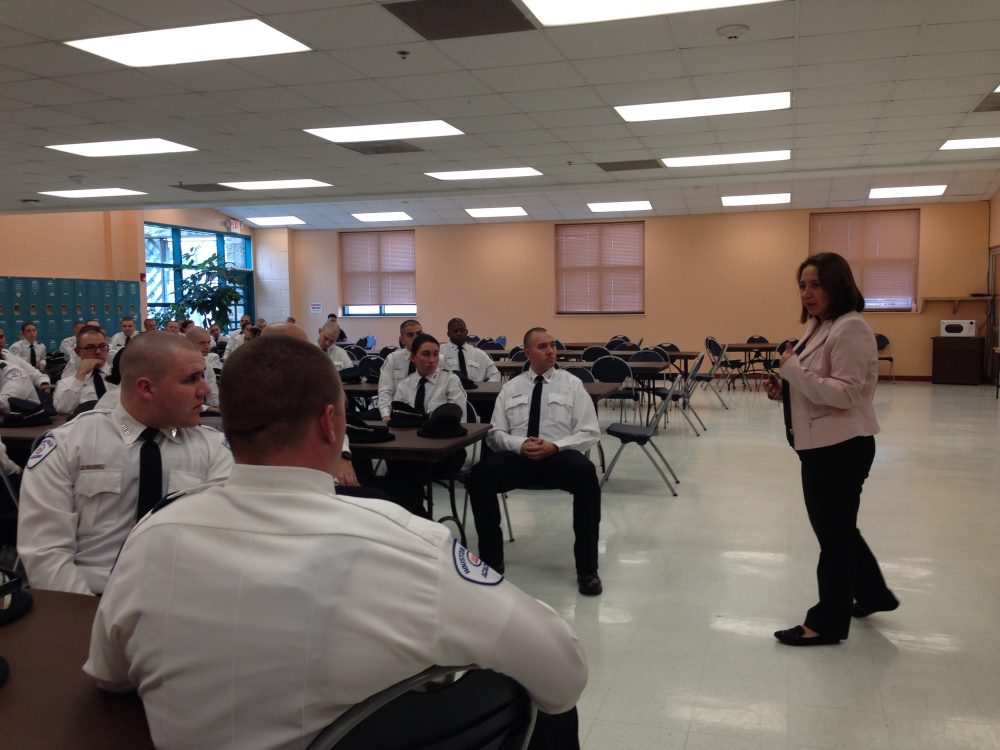Listen

The quality of the training of police officers in Texas has been in the spotlight recently and incidents such as the arrest of Sandra Bland in Waller County last year and the shooting of Alva Braziel in Houston this past summer have raised questions about how law enforcement deals with diversity and de-escalation tactics.
One of the measures the Houston Police Department has taken recently is a tour of the city to teach cadets about its diversity.
The tour makes stops in African-American, Asian, Latino and Muslim neighborhoods.
"We recruit nationwide and, so, many cadets don’t really understand the history of Houston and, so, we’ll take them out to Acres Homes, we’ll take them out to Meyerland, we’ll take them out to the Fifth Ward and community members will engage them and speak with them and then they’ll take the bus tour and kind of get a cultural history of Houston," explains Assistant Chief Charlie Vazquez, who oversees the Professional Development Command at HPD.
Vazquez says learning about Houston's diversity is useful for the cadets because they are introduced to members of the community who can help them establish trust in the groups they will be working with and that is a trust that eventually should lead to more effective policing.
Cadet Egla Flores says the tour allows trainees to learn small details that will help them when they interact with the public.
She gives an example of something she learned at the Islamic Society of Greater Houston when she took the tour.
"If we try to shake the woman’s hand they probably wouldn’t shake our hand, they would place their hands over their chest. It’s just little things that we learn from different communities," Flores notes.
But Houston is not the only city where police officers learn about diversity.
The Texas Commission on Law Enforcement requires that diversity and multiculturalism are part of the curriculum used for the basic training all police officers go through in the state.
The courses are a reflection of the changing demographics in the United States because of the growth of minorities and they also teach why police officers must avoid racial profiling.
There is also a class on basic Spanish due to the large Latino population of Texas.
"My sense is that minimal requirements for understanding diverse peoples are probably being met adequately across the board," comments Phillip Lyons, dean at the Criminal Justice College of Sam Houston State University.
Lyons also thinks initiatives like HPD's diversity course represent an added value for the training of its future officers.
In addition to diversity, the concept of de-escalation has also become an increasingly important component of the training through the years.
"I think the actions of the police have come under heightened scrutiny as it relates to how we deal with folks who have mental health problems or who are in crisis and, as a result of that, there is more attention given to training," Lyons adds.
Some of the tools police officers are instructed to use to de-escalate tense situations are prioritizing self-control and not behaving in an aggressive or condescending way, but paying attention to the nuances of non-verbal communication for certain communities can also be important.
For example, officers are taught that some Latinos may prefer not to make eye contact not because they are lying, but because it is the way they show respect.
Knowing how to work around personal space is relevant as well.
Officer C.K. Traxler, who works for the Pasadena Police Department and teaches crisis intervention, explains that they teach cadets and police officers who go through training "to look for signs of stress in the person as you are approaching and if you see their stress level going up, you stop at that point or maybe even back up a little bit to reduce the stress that they’re already feeling."
Police officers frequently conduct traffic stops, which can present situations that turn confrontational and those are situations in which the training is useful.
The protocol for police officers is that they must always say what is the reason for the stop and allow the driver to give an explanation for the traffic violation the officer deems he or she has committed, which can lower the stress of the situation.

 80 °F
80 °F